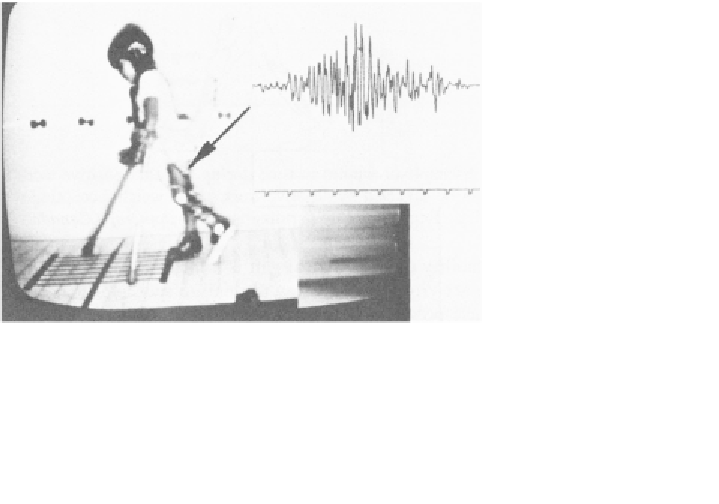Biomedical Engineering Reference
In-Depth Information
of the body and limb segments allows for a smooth interchange of energy.
However, in many pathologies the movement is so slow that there are
extended periods of time when limb segments or the trunk are being held
in near-isometric contractions. Spastic cerebral palsy patients often crouch
with their knee flexed, requiring excessive quadriceps activity to keep them
from falling down. Or, as seen in Figure 6.10, the crutch-walking cerebral
palsy child holds her leg off the ground for a period of time prior to
swing-through.
At the present time, it is impossible to quantify work against gravity
because there is no movement involved. The only possible technique that
might be used is the EMG, and each muscle's EMG would have to be cal-
ibrated against the extra metabolism required to contract that muscle. At
present, no valid technique has been developed to separate the metabolic cost
of this inefficiency.
6.1.1.3 Generation of Energy at One Joint and Absorption at Another.
The least known and understood cause of inefficiency occurs when one muscle
group at one joint does positive work at the same time as negative work is
being done at others. Such an occurrence is really an extension of what
occurs during a cocontraction (e.g., positive work being canceled out by
negative work of the antagonistic muscles). It is quite difficult to visualize
when this happens. During normal walking, it occurs during double support
when the energy increase of the pushoff leg takes place at the same time as
the weight-accepting leg absorbs energy. Figure 6.11 shows this point in gait:
the left leg's pushoff (positive work) is due primarily to plantarflexors; the
right leg's energy absorption (negative work) takes place in the quadriceps
and tibialis anterior. There is no doubt that the instability of pathological gait
Figure 6.10
Example of “work” against gravity, one of the causes of inefficient move-
ment. Here a cerebral palsy child holds her leg against gravity for an extended period
prior to swinging through. (Reproduced by permission of
Physiotherapy Canada
.)










Search WWH ::

Custom Search